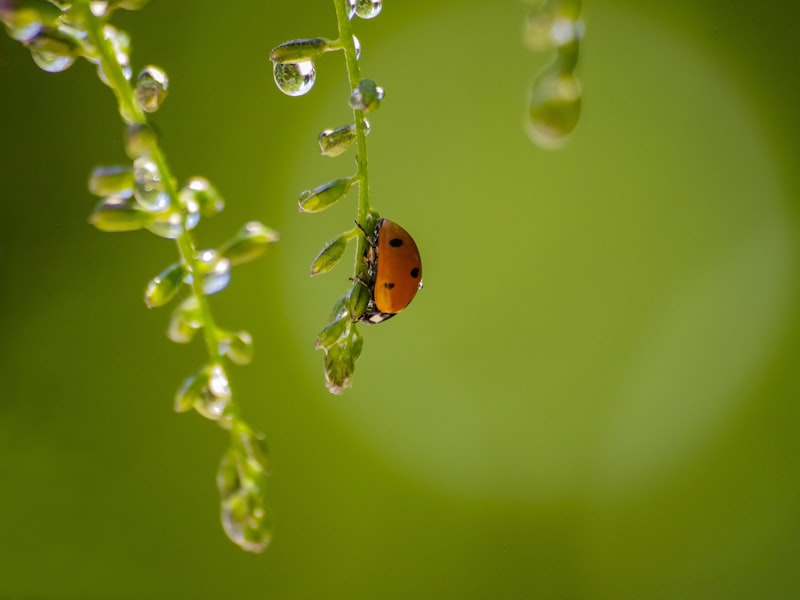RankerX---LEIPZIG-DE-für-EN-(Translate---en)---078

Leipzig over the weekend
Getting to Leipzig?
Leipzig is in the Gründerzeit
Leipzig is culture and history
Water town of Leipzig
What you must have seen in Leipzig Monument to the Battle of the Nations
Thomas Church
Nikolai Church
Propsteikirche St. Trinitatis
The new town hall
City high-rise, "Wisheitszahn", "Uniriese" or Panorama Tower Leipzig
Augustusplatz with Gewandhaus, Opera and Paulinum of the University of Leipzig
downtown passages
Karl-Liebknecht-Strasse - "Karli"
Bavarian train station
Federal Administrative Court
round corner
City History Museum
Grassi Museum
Old St. John's Cemetery
panometer
Interflight IL62
Zoo Leipzig
Leipzig is one of the cities I fell in love with. Why? Good question. I'll try to write it down here.
In fact, I first ended up in Leipzig because of my love at the time. But that was more than 10 years ago now. During this time I actually grew fond of Leipzig. So I am always drawn to the Saxon city on the Elster.
Getting to Leipzig?
By train: Leipzig is now well integrated in the long-distance network. From Munich and Berlin we go directly to Leipzig. From Stuttgart, Frankfurt and co via Fulda to Leipzig. By car: Of course it also has a motorway connection. But it is more convenient: By plane: You fly to Leipzig/Halle Airport (LEJ) and then take the InterCity or the S-Bahn to the city.
Leipzig is in the Gründerzeit
In short: Leipzig did a lot of things right. The proximity to Berlin and Dresden was a problem for a long time. Today, Berliners are drawn to Leipzig to live and only to Berlin to work. Leipzig is in the Gründerzeit. During the GDR, Leipzig had no money for urban redevelopment and so built its prefabricated housing estates on the outskirts. The houses from the Wilhelminian period were simply left standing in the city due to a lack of money and left to their fate. Many historical buildings survived the GDR. After reunification, these old buildings, some of which had fallen into disrepair, were gradually renovated and rebuilt. In Leipzig and its districts there are again many streets with a lot of historical buildings. The Waldstrasse district is certainly one of the most impressive examples. Today, Germany's quantitatively and qualitatively greatest wealth of Wilhelminian and Art Nouveau buildings can be found in Leipzig.
Click on the button below to load the content of widget.getyourguide.com.
load content
Leipzig is culture and history
Leipzig has around 15,600 cultural monuments and is number one in Germany. In fact, there has always been and always is something going on in Leipzig. The great decisive battle of the so-called wars of liberation was fought here. Around 600,000 soldiers fought at the gates of Leipzig. During the Battle of the Nations, Napoleon's troops lost to the superior forces of the Russians, Prussians, Austrians and Swedes. About 92,000 soldiers lost their lives. The Nikolaikirche Leipzig stands for the Peaceful Revolution, during which peace prayers and ultimately the large demonstrations in autumn 1989 by thousands of GDR citizens heralded the end of the GDR
Water town of Leipzig
Leipzig is a city of water. Yes, at the beginning of the 20th century, Romantics called Leipzig the "Pleissathen". In fact, water runs through Leipzig. There is the Weiße Elster, the Pleiße, the Luppe, the Parthe and the Karl-Heine Canal. Leipzig has a total of around 300 water bridges and even has almost a connection to the inland waterways with the Lindenauer Hafen. With the connection to the Elster-Saale canal, nothing more happened shortly before completion.
The Central German lignite mining area around Leipzig was abandoned by the turnaround. What other lignite mining areas are currently afraid of was made easy here in the early 1990s. The opencast mine was closed and the remaining holes flooded. The people of Leipzig already knew the process from the GDR era, when in the 1970s the Kulkwitzer See became known as the Leipzig people's bathtub. Today these are wonderful local recreation areas.
What you have to see in Leipzig
Leipzig offers something to discover for every taste. It is indeed difficult to see all of Leipzig in just one weekend. Here are a few suggestions that you should see in Leipzig. However, there is still a lot more to discover. But that's the way it should be.
Affectionately called "Völki" by the people of Leipzig. A must-see. Various events are held around the monument. (Tram 15 towards Meusdorf)
The world-famous Thomanerchor has been here for almost 800 years. The late Gothic church is one of the two main churches in Leipzig. The University of Leipzig was founded here in 1409. (Tram 9, direction Thekla)
The other of the two main churches. It is the oldest and largest church in Leipzig. It is in the middle of the city center and this is where the Peaceful Revolution began in 1989. Since 2010 it has been commemorated with the St. Nicholas Column next to the church.
Propsteikirche St. Trinitatis
It was consecrated in 2015 and is also known as "Sankt Tetris" because of its striking construction. (Wilhelm-Leuschner-Platz, opposite the new town hall)
The new town hall
One of the most striking buildings in Leipzig. Seat of the administration since 1905 and was built in the historicism of that time. Participating in a public tour is particularly worthwhile. This gives you the opportunity to climb Germany's highest town hall tower at 114.7 meters. Yes to climb, because unfortunately the elevator has been out of service for years. After 250 steps you have a unique view over Leipzig. The casemates of the town hall can also be visited. Even smaller festivities can be held here today.
City high-rise, "Wisheitszahn", "Uniriese" or Panorama Tower Leipzig
For 3 euros (as of 2018) you can go to the 31st floor and let your gaze wander over Leipzig and the surrounding area from the 120-metre-high viewing platform. When it opened in 1972, it was the tallest building in Germany at 142 meters. Below the viewing platform is the noble restaurant "Panorama Tower - Plate of Art". You should reserve here in advance. (Augustus Square)
Augustusplatz with Gewandhaus, Opera and Paulinum of the University of Leipzig
You absolutely have to stop by here. Not just to climb the city skyscraper, but to enjoy the square in the evening. There is always something going on. People don't just meet here to go to the opera or the theatre. The Paulinum is also extremely worth seeing. It is the assembly hall and university church of St. Pauli. From the outside it is supposed to remind you of the Paulinerkirche that was blown up in 1968. Inside, the Dutch architect Erick van Egeraat created an exciting atmosphere. Sobriety and grandeur paired with clarity and a touch of Bauhaus. Exciting. The Augustusplatz with the tram and the small lake in front of the opera is ideal for night shots.
singlepic id=8374 w=1200 float=center] Downtown passages
In the city center there are countless small and large arcades. Many of them contain small studios or boutiques and co. Just take a turn and be fascinated by the charm of the passages.
Karl-Liebknecht-Strasse - "Karli"
The "Karli" is probably Leipzig's trendy pub mile. Bars, cafes and pubs are crowded together here. However, the Karli is now so overcrowded that it is better to switch to other nice places in the city.
Bavarian train station
Opened in 1942 and operated until 2001. Until then, it was the oldest terminal station in Germany. At the beginning of 2013, Leipzig got an S-Bahn network that also has the Bayerischer Bahnhof as a stop. All the old tracks were removed for this purpose. Today only the front building on the city side, the entrance portal, is left. (Bavarian Square 1)
The highest court in Germany has been based in Leipzig (again) since 2002. From 1879 to 1945, the highest court of the German Reich for civil and criminal matters was in the same place. The Pleißemühlgraben in front of the building was only uncovered again during the renovation in the 2000s. (Münzgasse, tram 11)
round corner
The memorial museum in the "round corner" deals with the district administration for state security that was formerly housed in the same place. (Dittrichring 24)
City History Museum
A number of interesting Leipzig museums can be found under this umbrella. Sports Museum, Old Stock Exchange, Museum of the Arabic Coffee Tree, Schiller House, Monument to the Battle of the Nations, Old Town Hall, Children's Museum and the Böttchergäßchen building in the city center. I liked that very much.
The Grassi Museum is the largest museum complex in Germany. Here the visitor will find the Leipzig Museum of Ethnology, the Museum of Musical Instruments at the University of Leipzig and Germany's second-largest arts and crafts museum, the Museum of Applied Arts. (Johannisplatz, tram 7 towards Sommerfeld)
Old St. John's Cemetery
The Old St. John's Cemetery is directly behind the Grassi Museum. In 1278 it was created for the Johannish Hospital and was used until 1883. Leipzig 's most famous musician, Johann Sebastian Bach, was buried here. In 1950 it was decided to bury his remains in the Thomaskirche. I love such old places and a walk along the old tombs immediately decelerates from the exciting everyday life.
Since 2003, huge 360° panoramas by the artist Yadegar Asisi have been exhibited in the former gasometer. (Bus: line 70: stop "Altenburger Straße", approx. 5 minutes walk)
Interflight IL62
The airline of the GDR was called Interflug and is now almost forgotten. In Leipzig, however, you can still experience an Interflug machine. Next to a bowling center is the IL62 with a mobile staircase and two Interflug crew transporters. In summer you can eat on the "wing terrace". You can also rent the interior space for parties and celebrations. (Tram 16 Lößnig to Triftweg)
The Leipzig Zoo is absolutely worth seeing. You should plan a day for a visit. Only half a day is almost too good to be able to really enjoy and discover the great facilities. Here is the zoo check: Zoo Leipzig from me.
Typical food in Leipzig
I always try to find something typically regional to eat on my travels. You don't always find something and you don't always want to try what you find. So far in Leipzig I haven't had any concerns. The famous "Leipziger Allerlei" should be absolutely typical. A delicious vegetable dish made of peas, carrots, asparagus and mushrooms. From time to time there are also variations with crayfish.
You drink a Leipziger Gose with it. A beer that originally comes from Goslar. For a long time she was almost forgotten. It has been appearing again in Dresden and Leipzig for a number of years and is enjoying increasing popularity. The Gose is similar to the Berliner Weisse. It is a top-fermented beer that also undergoes lactic acid fermentation. Add some coriander. In summer, chilled, really tasty!
If you want to take a short break somewhere around coffee time for a sweet pastry, you shouldn't order a cappuccino, but simply order a "Scheelschen Heeßen". The smile of the service staff should hardly go unnoticed.
